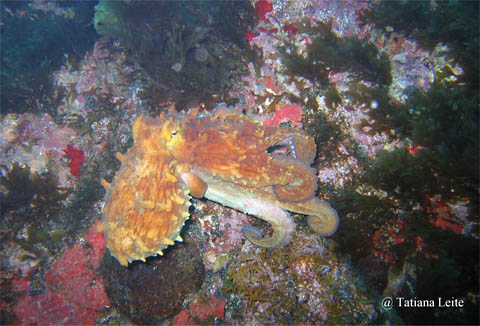
Although the Gulf of Mexico has been intensively surveyed by scientists and picked over by fishermen, it is still home to fishes that are waiting to be described. New research published in the Journal of Fish Biologydescribes two new species of pancake batfishes (Halieutichthys intermedius and H. bispinosus) and re-describes another (H. aculeatus), all of which live in waters either partially or fully encompassed by the recent oil spill.
"One of the fishes that we describe is completely restricted to the oil spill area," says John Sparks, curator of Ichthyology at the American Museum of Natural History. "If we are still finding new species of fishes in the Gulf, imagine how much diversity -- especially microdiversity -- is out there that we do not know about."
Pancake batfishes are members of the anglerfish familyOgcocephalidae, a group of about 70 species of flat bottom-dwellers that often live in deep, perpetually dark waters. Pancake batfishes have enormous heads and mouths that can thrust forward. This, combined with their ability to cryptically blend in with their surroundings, gives them an advantage for capturing prey. They use their stout, arm-like fins to 'walk' awkwardly along the substrate; their movements have been described as grotesque, resembling a walking bat. As most anglerfishes, batfishes have a dorsal fin that is modified into a spine or lure, although their lure excretes a fluid to reel in prey instead of bio-illuminating.
The pancake batfishes described by Sparks and colleagues, genus Halieutichthys , live in shallower waters than most batfishes and occur along the coasts of the Gulf of Mexico and Atlantic from Louisiana to North Carolina. Until now, the currently described three fishes had been lumped into one species, since they all have similar coloration and body shape.
But there are several differences. The three species are distinguished by the size, shape (blunt or sharp), and arrangement of tubercles on the body; the presence or absence of dark bands on the pectoral fin; and the unique reticulate pigmentation patterns on the dorsal body surface. H. aculeatus, the re-described species, is characterized by a comparatively sparse arrangement of spiny tubercles and is distributed along the northeastern gulf coast as well as along the Florida, Georgia, and Carolina coasts. H. bispinosus is a newly described species with a characteristic pattern of densely arranged spiny tubercles covering the body and a geographic distribution similar to H. aculeatus. Finally, H. intermedius, the second newly described species, has a smooth, non-spiny dorsal surface and a geographic distribution that mirrors the current range of the Gulf oil spill. This last species does not have a known population outside of the Gulf of Mexico.
"These discoveries underscore the potential loss of undocumented biodiversity that a disaster of this scale may portend," says Sparks.
In addition to Sparks, authors include Hsuan-Ching Ho of the Biodiversity Research Center of Academica Sinica in Taipei, Taiwan and Prosanta Chakrabarty of the Museum of Natural Science at Louisiana State University. The research was funded by the National Science Foundation, the Lakeside Foundation, and the Lerner-Gray Fund for Marine Research. American Museum of Natural History (2010, July 8). Two new species of pancake batfishes discovered from area engulfed by oil spill.ScienceDaily. Retrieved July 11, 2010, from http://www.sciencedaily.com/releases/2010/07/100708111206.htm


















